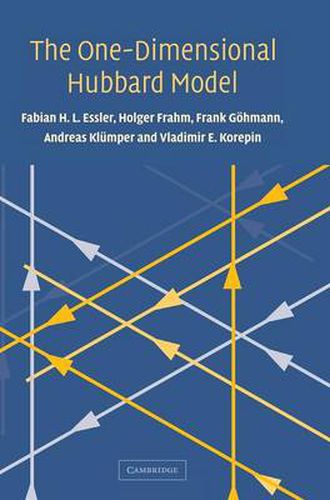Readings Newsletter
Become a Readings Member to make your shopping experience even easier.
Sign in or sign up for free!
You’re not far away from qualifying for FREE standard shipping within Australia
You’ve qualified for FREE standard shipping within Australia
The cart is loading…






The description of solids at a microscopic level is complex, involving the interaction of a huge number of its constituents, such as ions or electrons. It is impossible to solve the corresponding many-body problems analytically or numerically, although much insight can be gained from the analysis of simplified models. An important example is the Hubbard model, which describes interacting electrons in narrow energy bands, and which has been applied to problems as diverse as high-Tc superconductivity, band magnetism, and the metal-insulator transition. This book presents a coherent, self-contained account of the exact solution of the Hubbard model in one dimension. The early chapters will be accessible to beginning graduate students with a basic knowledge of quantum mechanics and statistical mechanics. The later chapters address more advanced topics, and are intended as a guide for researchers to some of the more recent scientific results in the field of integrable models.
$9.00 standard shipping within Australia
FREE standard shipping within Australia for orders over $100.00
Express & International shipping calculated at checkout
The description of solids at a microscopic level is complex, involving the interaction of a huge number of its constituents, such as ions or electrons. It is impossible to solve the corresponding many-body problems analytically or numerically, although much insight can be gained from the analysis of simplified models. An important example is the Hubbard model, which describes interacting electrons in narrow energy bands, and which has been applied to problems as diverse as high-Tc superconductivity, band magnetism, and the metal-insulator transition. This book presents a coherent, self-contained account of the exact solution of the Hubbard model in one dimension. The early chapters will be accessible to beginning graduate students with a basic knowledge of quantum mechanics and statistical mechanics. The later chapters address more advanced topics, and are intended as a guide for researchers to some of the more recent scientific results in the field of integrable models.